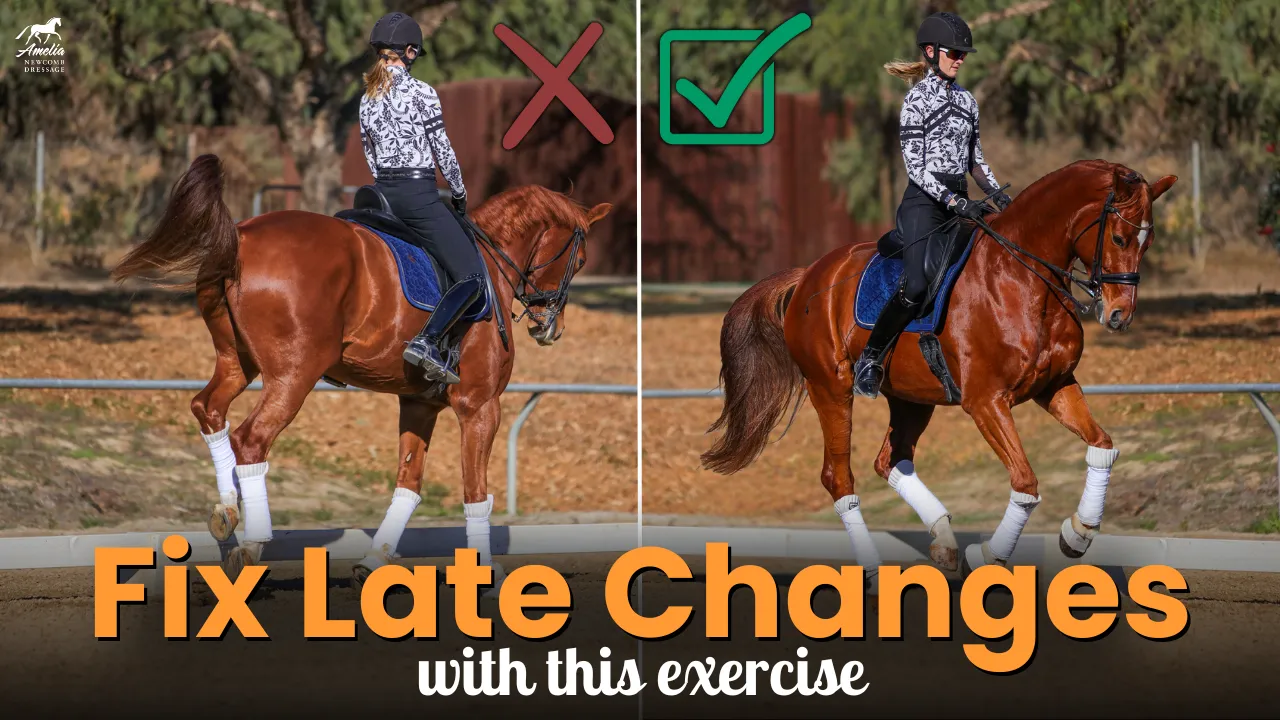Ingrid Klimke is one of the most beautiful riders to watch. Her seat is incredibly secure, and her aids are soft, subtle, and nearly invisible. Earlier this year, I had the honor of interviewing Ingrid in our Strides with Amelia program. During the interview, she shared something powerful: every week, she rides without stirrups and bridges her reins. This routine helps develop her independent seat and her connection with the horse.
In this video, I’m sharing how to test your own independent seat using the same methods Ingrid uses. Plus, check out my Free Independent Seat Webinar for even more help building stability and balance in the saddle.
What Is an Independent Seat?
We often hear the term “independent seat,” but what does it really mean? Simply put, it means your seat follows and absorbs the horse’s movement, and your hands and legs work independently to cue and communicate with your horse. Your legs give aids without affecting your seat, and your hands stay steady and soft.
When your seat is independent, your horse moves with suppleness and elasticity. It’s a game-changer for your riding.
Ingrid’s No-Stirrups + Bridged Reins Routine
Ingrid’s routine is simple but effective:
- She crosses her stirrups in front of the saddle.
- She bridges her reins, folding them and holding both in both hands.
- Then she rides transitions: walk–trot, trot–walk, and eventually trot–canter.
This setup is the ultimate test. Riding without stirrups shows whether you’re gripping with your legs or relying on the stirrups for balance. Bridging the reins keeps your hands quiet and together, forcing you to ride more from your seat and leg, and less from the hand.
How to Try This Yourself
Start at the walk, cross your stirrups, and gently bridge your reins. Your toes should stay forward, and your legs relaxed and in position. From there, try some walk–trot–walk transitions. As you build confidence, move on to trot–canter–trot.
Ride like this for three to five minutes at a time. Then take your stirrups back and unbridge your reins. Switch directions to feel both sides. This exercise will not only improve your balance but also highlight any asymmetry or reliance on your hands or legs.
Remember, your seat spans from your ribs to just above your knees. That entire area should move in harmony with your horse, three-dimensionally. If you sit stiff, you bounce—and your horse hollows or slows down. If you move with the motion, your horse can lift and carry you better.
Riding without stirrups and with bridged reins highlights where you rely too much on your hands or legs. It builds balance, feel, and awareness. Even just a few minutes of this each week can lead to a more secure seat and better communication with your horse.
A strong, independent seat improves everything—from your horse’s balance to their willingness to go forward. Start small, stay consistent, and you’ll notice real change.
Happy Riding!
Amelia
P.S. If you need more help with your rider position, don’t forget to sign up for the Free Independent Seat Webinar! Inside, I will be going through step-by-step how to improve your position and seat so that you can ride with confidence and have fun with your horse!












































